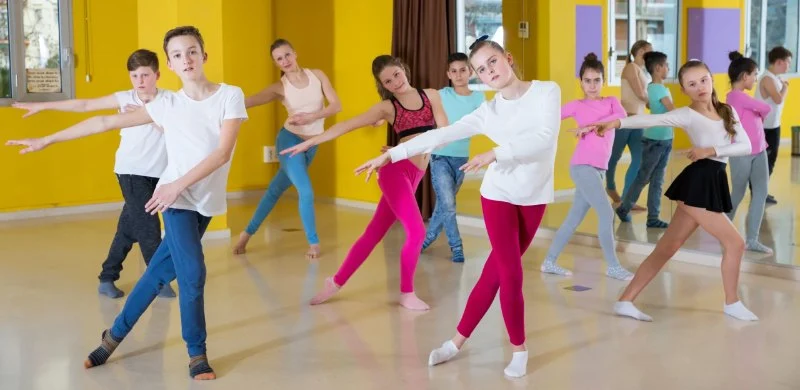
The Etiquette of Dance Classes: Unwritten Rules You Should Know
When stepping into a dance studio for the first time, it's not just about learning the steps. Understanding the unspoken rules of dance classes is just as important to ensure you make a good impression, build positive relationships with instructors and classmates, and create a successful and enjoyable experience. Dance class etiquette involves respect for the space, people, and the art form itself. In this article, we’ll explore the unwritten rules of dance classes and offer helpful tips for navigating this exciting environment.
Why Dance Etiquette is Important
Proper etiquette in dance classes ensures a positive, respectful, and effective learning environment for everyone involved. Whether you're a beginner or an advanced dancer, understanding the etiquette can help you succeed, avoid awkward situations, and show that you're committed to your craft. Here's why dance etiquette matters:

Artistic Movement Academy of Dance / artistic movement academy of dance
Glen BurnieAnne Arundel CountyMaryland
890 Airport Park Rd Suite 120, Glen Burnie, MD 21061, USA
Building a Positive Environment
Good etiquette contributes to a positive atmosphere in the class. When everyone respects the rules, it fosters a space of collaboration and mutual respect where dancers feel safe to express themselves and learn without fear of judgment or distractions.
Respecting Instructors and Classmates
Instructors are there to guide you and your classmates are there to share the experience. By adhering to proper etiquette, you show respect for both, which leads to better communication and stronger connections. It also helps create a more enjoyable and focused class for everyone.
Common Dance Class Etiquette Rules
While some dance studios may have specific rules or guidelines, there are several universal etiquette practices that apply to most dance environments. Let’s break down these common rules:
1. Arrive on Time
Punctuality is crucial in dance classes. Arriving late can disrupt the class and prevent you from properly warming up. It's important to arrive early enough to change into your dance attire, stretch, and be ready when the class begins. If you're late for a good reason, it’s courteous to wait for an appropriate moment to enter, rather than disrupting the class.
2. Dress Appropriately
Each dance style may require different attire, but one thing remains consistent—wearing the proper clothing is essential. Comfortable, fitted clothing that allows you to move freely is a must. Many studios also have specific guidelines about footwear, so make sure to check with your instructor or studio beforehand. Wearing appropriate clothing shows you are serious about your practice and helps prevent injury.
3. Listen to the Instructor
Listening to your instructor is crucial for your progress and the flow of the class. Pay attention to their corrections, guidance, and demonstrations. Avoid talking or socializing during instructions. If you need clarification, wait for a break or ask politely after class. This ensures that everyone in the class can hear and learn without distractions.
4. Maintain Personal Space
In dance classes, personal space is essential, especially during partnered or group choreography. Be mindful of the space around you and avoid getting too close to other dancers unless directed by the instructor. Respecting personal space helps ensure safety and allows everyone to move freely without collisions or discomfort.
5. Focus on Your Own Progress
It can be tempting to compare yourself to others, especially in a group class, but it’s important to focus on your own learning and progress. Dance is a personal journey, and everyone learns at their own pace. Celebrate your growth, and avoid distractions that could take away from your own development. It's also respectful to give your fellow dancers the space to focus on their own improvement.
6. Be Supportive of Others
Dance is an art form that thrives on community and collaboration. Being supportive of your classmates creates a more encouraging and positive environment. Applaud others when they improve or execute difficult moves. If you see a classmate struggling, offer assistance in a friendly manner. Positive reinforcement benefits everyone, fostering a more supportive and fun environment.
7. Respect the Studio Space
Many dance studios have specific rules regarding cleanliness and the use of space. Always keep your belongings organized and out of the way. Be sure to clean up after yourself, including picking up any equipment or personal items. Additionally, be mindful of the floor—avoid chewing gum or wearing shoes that could damage the surface of the studio.
Real-Life Case Study: Improving Class Dynamics with Etiquette
A ballet instructor at Creative Edge Dance Studio once noticed that a few students weren’t listening during group exercises, causing disruptions. After a brief discussion on the importance of dance etiquette, the students realized that their actions were affecting not only their own progress but also their classmates’ experience. By implementing clear expectations for listening, punctuality, and respect, the class atmosphere improved drastically. Not only did the students improve their skills, but they also began to encourage each other more, fostering a more positive and productive learning environment.
Why Choose Creative Edge Dance Studio?
At Creative Edge Dance Studio, we emphasize both the art of dance and the importance of maintaining proper etiquette. Our classes are designed to cultivate a positive and respectful environment where students can thrive. Whether you're a beginner or an advanced dancer, we provide the support, guidance, and structure needed to help you grow in your dance journey. Visit us today to discover how we can help you develop your dance skills in a supportive and welcoming atmosphere!
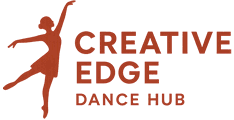

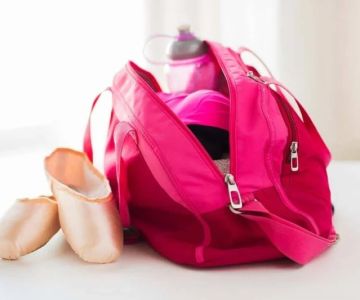
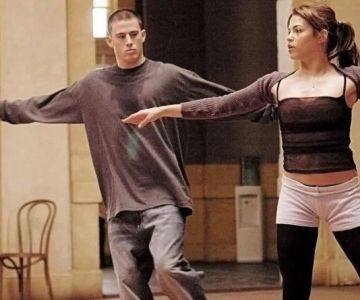
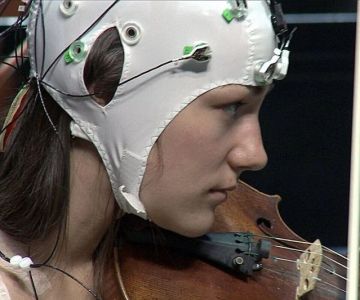
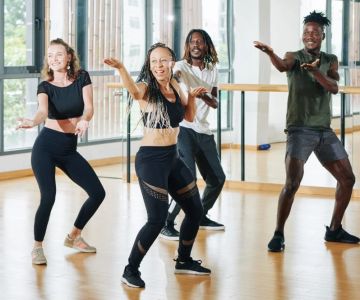


 The Absolute Studio5.0 (7 reviews)
The Absolute Studio5.0 (7 reviews) NC Academy of Dance Arts5.0 (13 reviews)
NC Academy of Dance Arts5.0 (13 reviews) Carmen de Vicente0.0 (0 reviews)
Carmen de Vicente0.0 (0 reviews)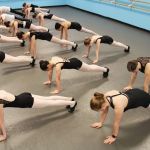 Bailey Fine Arts Centre4.0 (7 reviews)
Bailey Fine Arts Centre4.0 (7 reviews)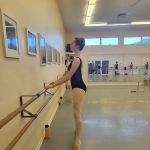 The Raleigh School of Ballet4.0 (25 reviews)
The Raleigh School of Ballet4.0 (25 reviews) Kyp Dance Studio3.0 (4 reviews)
Kyp Dance Studio3.0 (4 reviews) My Story of Teaching a Charity Dance Class in a Senior Home — What Happened
My Story of Teaching a Charity Dance Class in a Senior Home — What Happened The Best Dance Styles for Kids to Build Discipline and Fun
The Best Dance Styles for Kids to Build Discipline and Fun How to Support Your Friend or Partner Who is Starting Dance
How to Support Your Friend or Partner Who is Starting Dance How I Learned to Teach Dance for Neuro-Diverse Students — My Story
How I Learned to Teach Dance for Neuro-Diverse Students — My Story How to Create a Dance Resume for Auditions or Applications
How to Create a Dance Resume for Auditions or Applications What is Stepping or Step Dance? Tradition and Teamwork in this Dynamic Dance Style
What is Stepping or Step Dance? Tradition and Teamwork in this Dynamic Dance Style